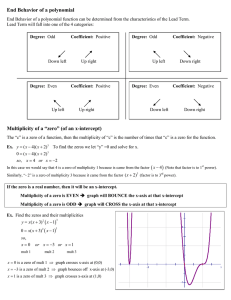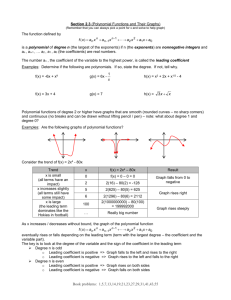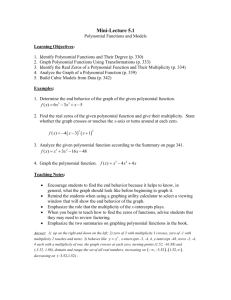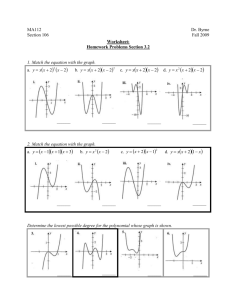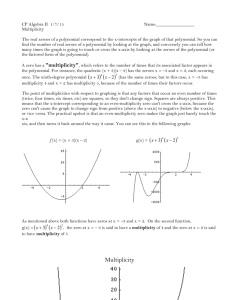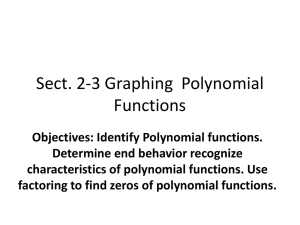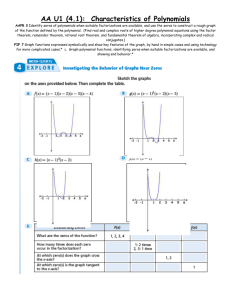Section 3
advertisement
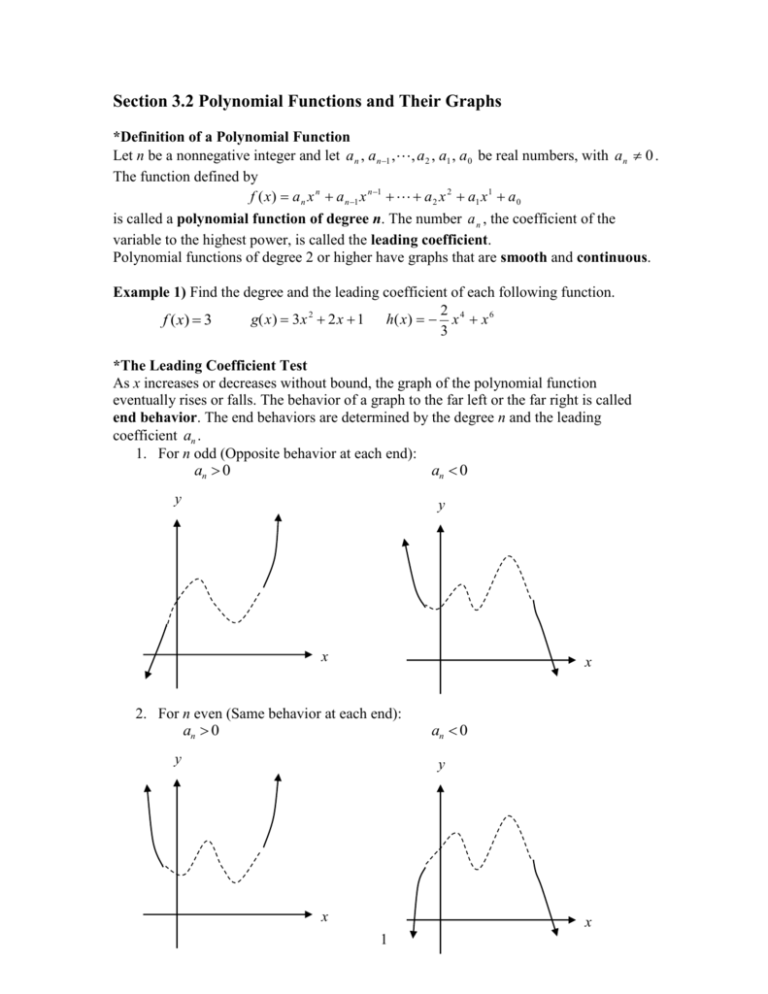
Section 3.2 Polynomial Functions and Their Graphs *Definition of a Polynomial Function Let n be a nonnegative integer and let an , an1 ,, a2 , a1 , a0 be real numbers, with an 0 . The function defined by f ( x) a n x n a n 1 x n 1 a 2 x 2 a1 x1 a 0 is called a polynomial function of degree n. The number a n , the coefficient of the variable to the highest power, is called the leading coefficient. Polynomial functions of degree 2 or higher have graphs that are smooth and continuous. Example 1) Find the degree and the leading coefficient of each following function. 2 g(x) 3x 2 2x 1 h( x) x 4 x 6 f (x) 3 3 *The Leading Coefficient Test or decreases without bound, the graph of the polynomial function As x increases eventually rises or falls. The behavior of a graph to the far left or the far right is called end behavior. The end behaviors are determined by the degree n and the leading coefficient an . 1. For n odd (Opposite behavior at each end): an 0 an 0 y y x x 2. For n even (Same behavior at each end): an 0 y an 0 y x x 1 Example 2) Use the Leading Coefficient Test to determine the end behavior of the graph of f (x) x 4 3x 3 2 . *Zeros of Polynomial Functions Zeros: the values of x for which f (x) 0 , i.e. roots or solutions of f (x) 0 . Each real root of the polynomial appears as an x-intercept of the graph. Example 3) Find all zeroes of f (x) x 3 2x 2 4 x 8 . Example 4) Find all zeroes of f (x) x 4 4 x 2 . *Multiplicities of Zeros In factoring the equation for the polynomial function f, if the same factor x r occurs k times, but not k+1 times, we call r a zero with multiplicity k, i.e. (x r)k appears. Example 5) Find the zeros and each multiplicity of f (x) x 2 (x 2)(x 3) 3 . graph touches the x-axis and turn around at r. If r is a zero of even multiplicity, then the If r is a zero of odd multiplicity, then the graph crosses the x-axis at r. Graphs tend to flatten out at zeros with multiplicity greater than one. Even Multiplicity Odd Multiplicity y y x x 2 Example 6) Find the zeros of f (x) 4 x(x 1)(x 2) 2 and give the multiplicity of each zero. State whether the graph crosses the x-axis or touch the x-axis and turns around at each zero. *Turning Points of Polynomial Functions If f is a polynomial function of degree n, then the graph of f has at most n 1 turning points. *A Strategy for Graphing Polynomial Functions end behavior. Step1 Use Leading Coefficient Test to determine the Step2 Find x-intercepts by setting f (x) 0 . For a factor (x r)k of f (x) a. If k is even, the graph touches the x-axis at r and turns around b. If k is odd, the graph crosses the x-axis at r. c. If k>1, the graph flattens out at (r, 0). computing f (0) . Step 3 Find y-intercept by Step 4 Use symmetry, if applicable, to help draw the graph: a. y-axis symmetry: f (x) f (x) b. Origin symmetry: f (x) f (x) Step 5 Use the fact that the maximum number of turning points of the graph is n 1 to check whether it is drawn correctly. f (x) x 3 3x 2 Example 7) Graph 3


